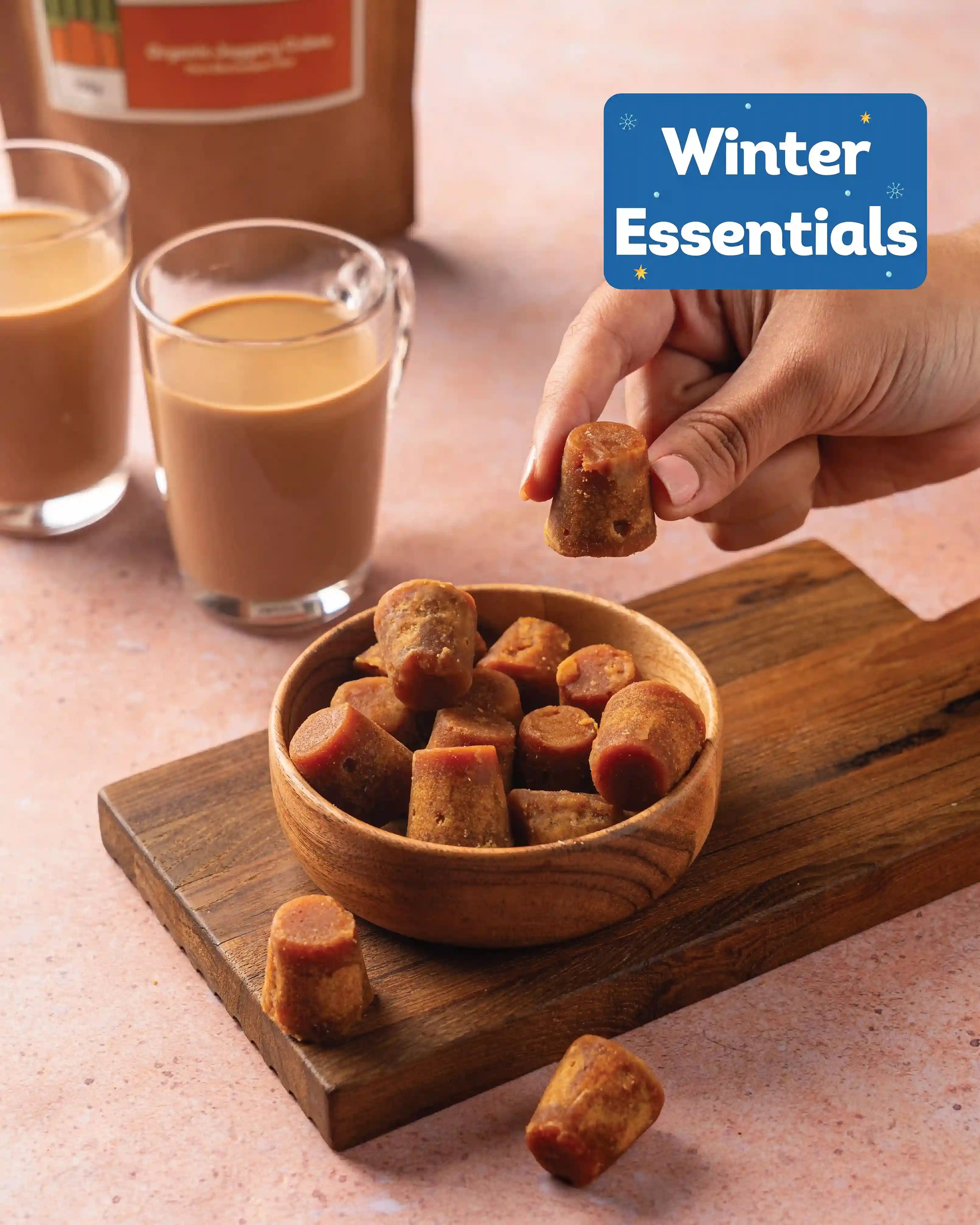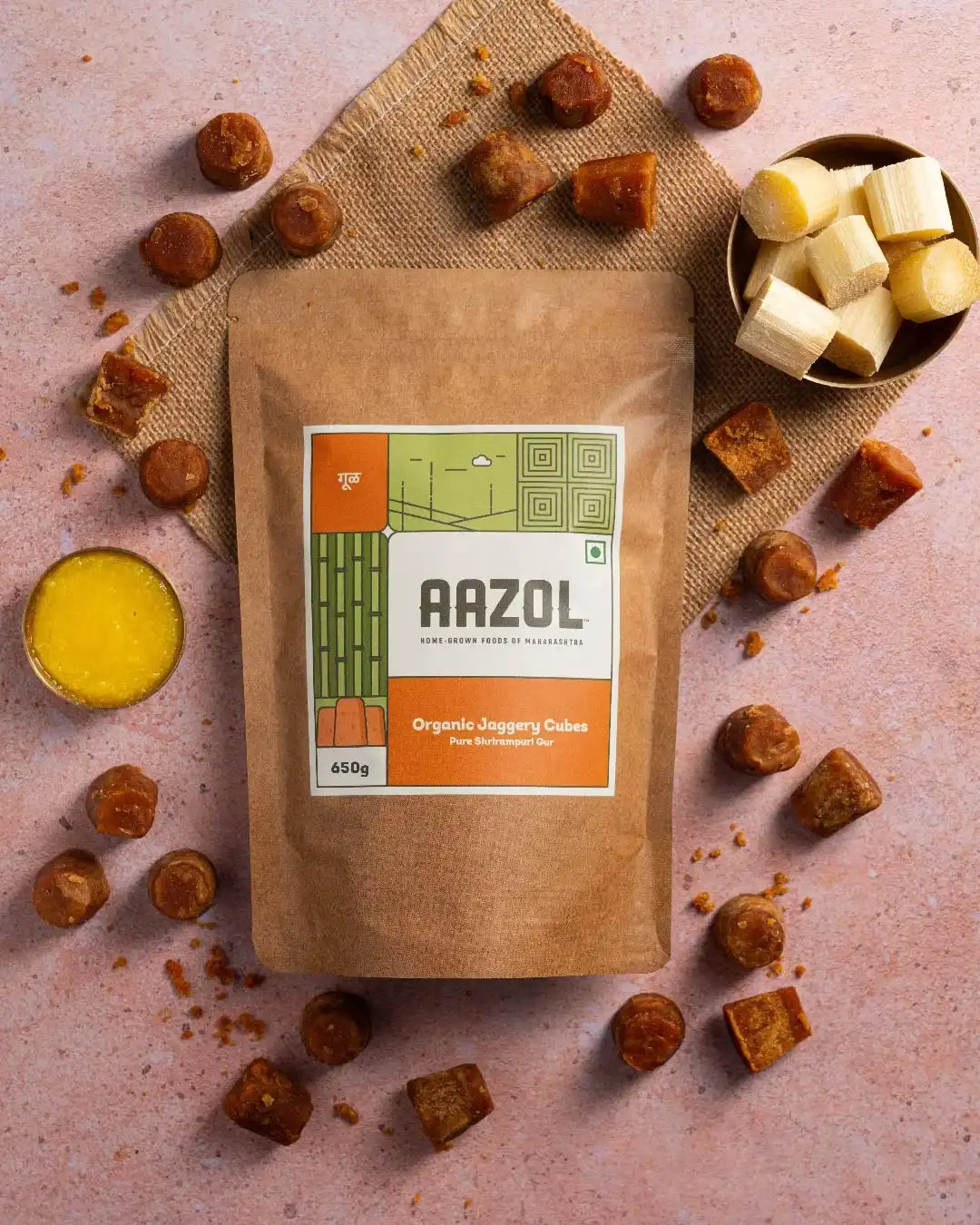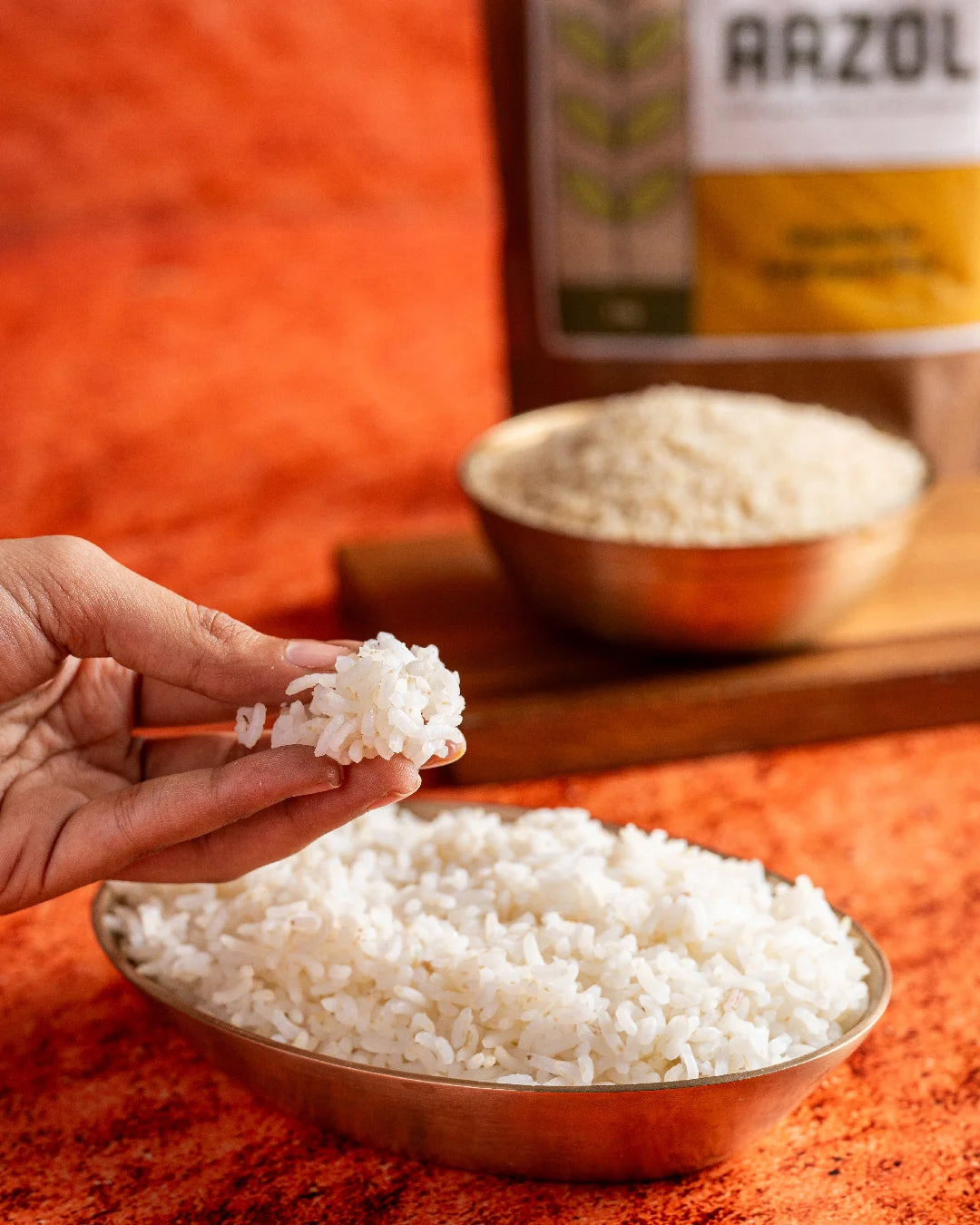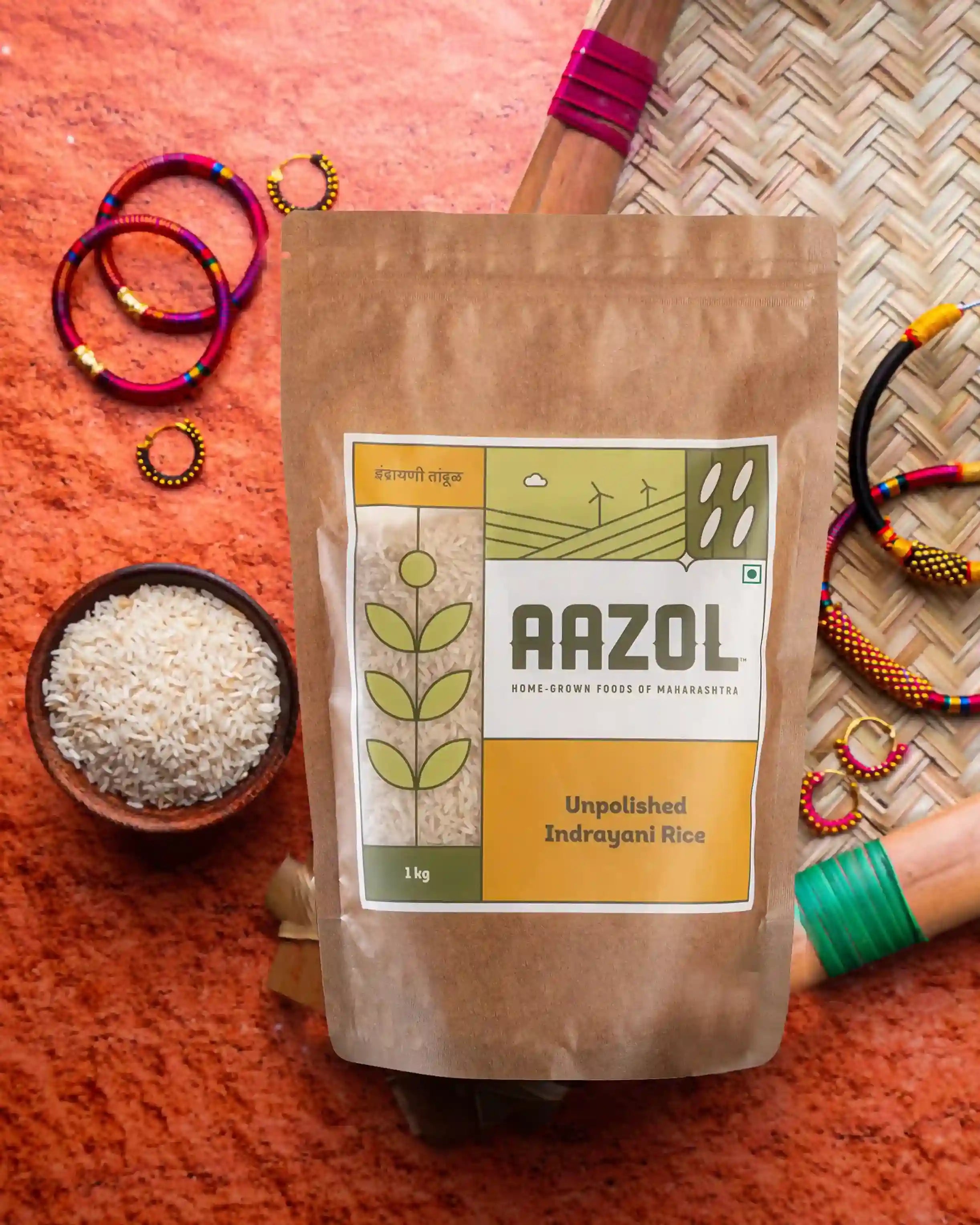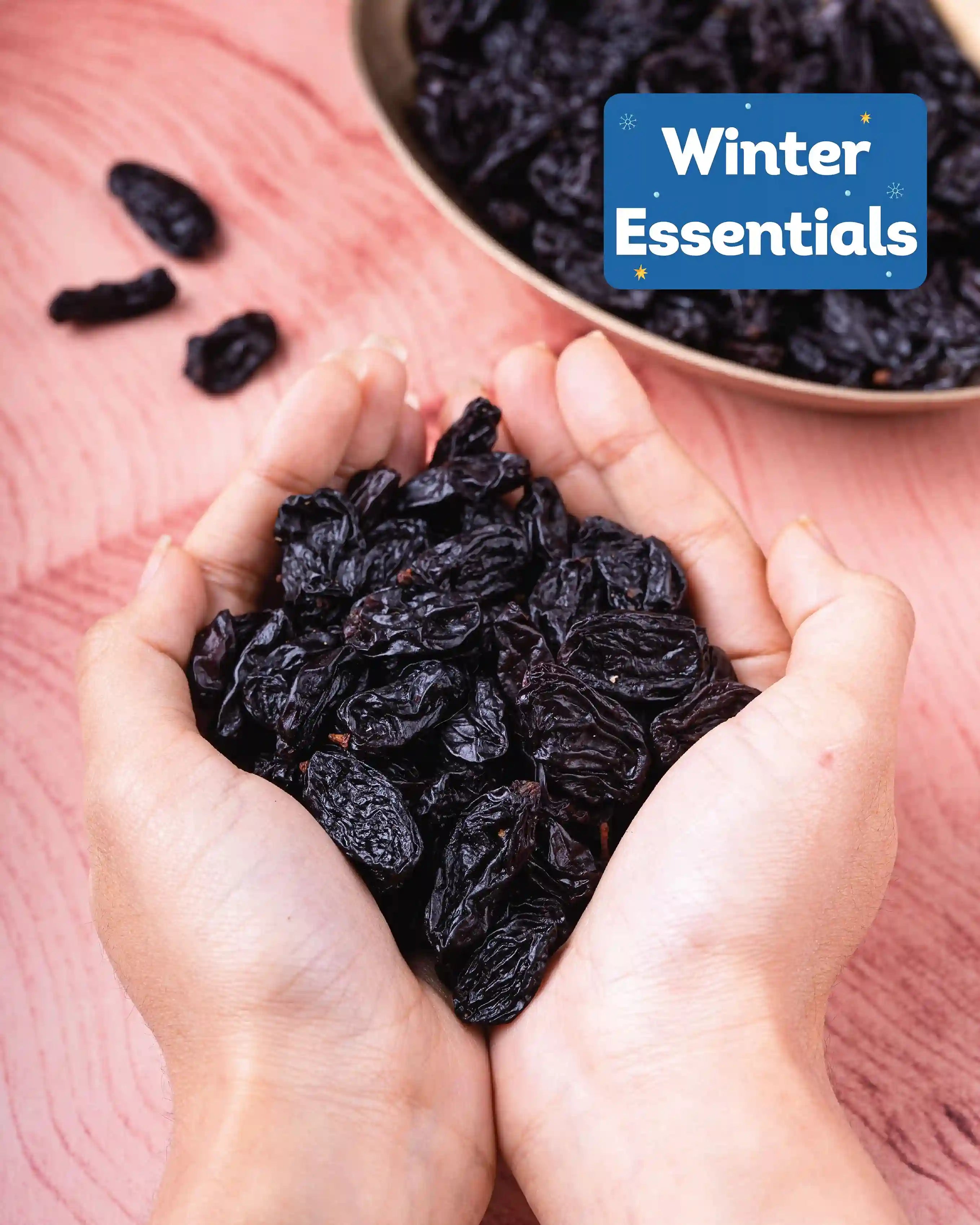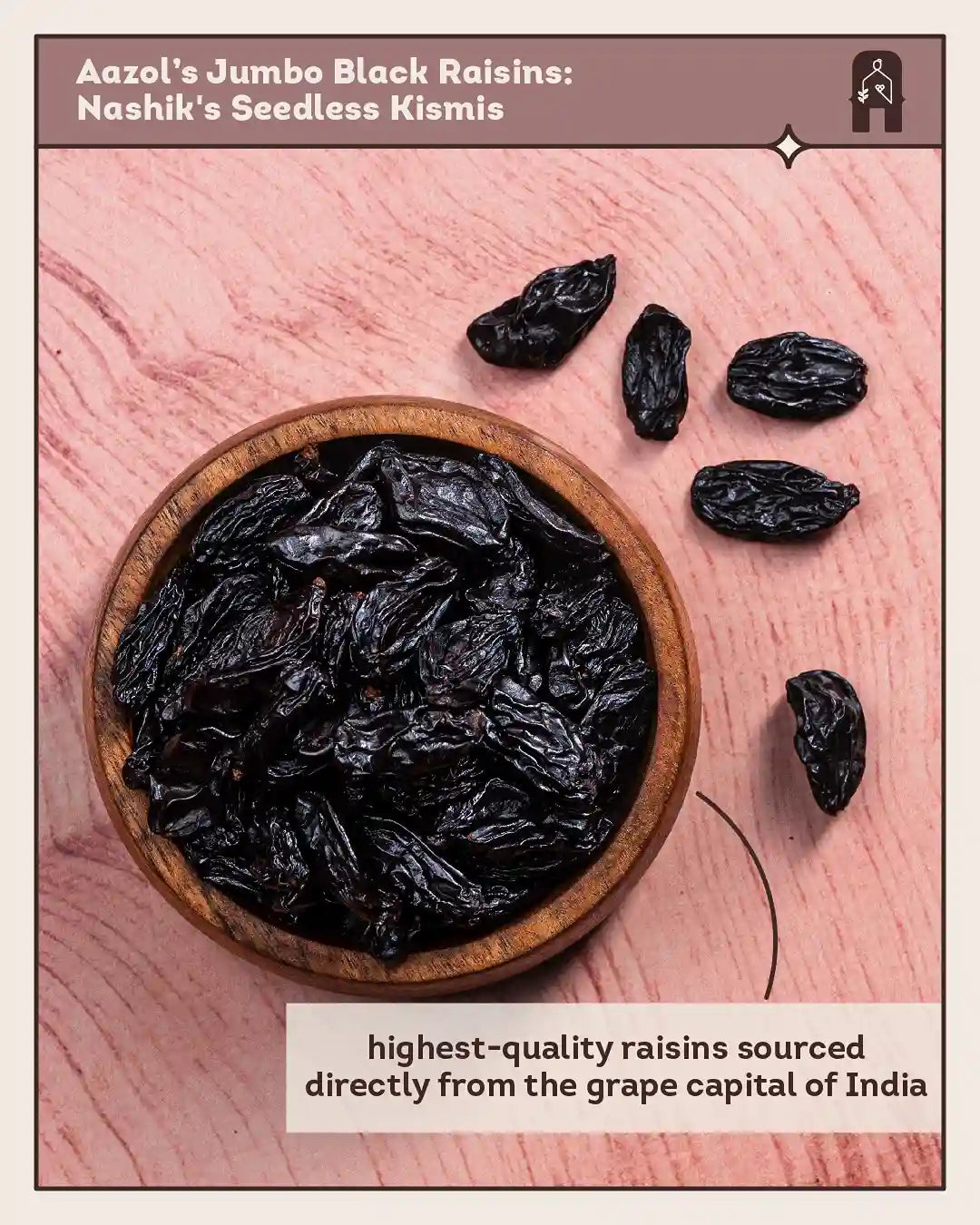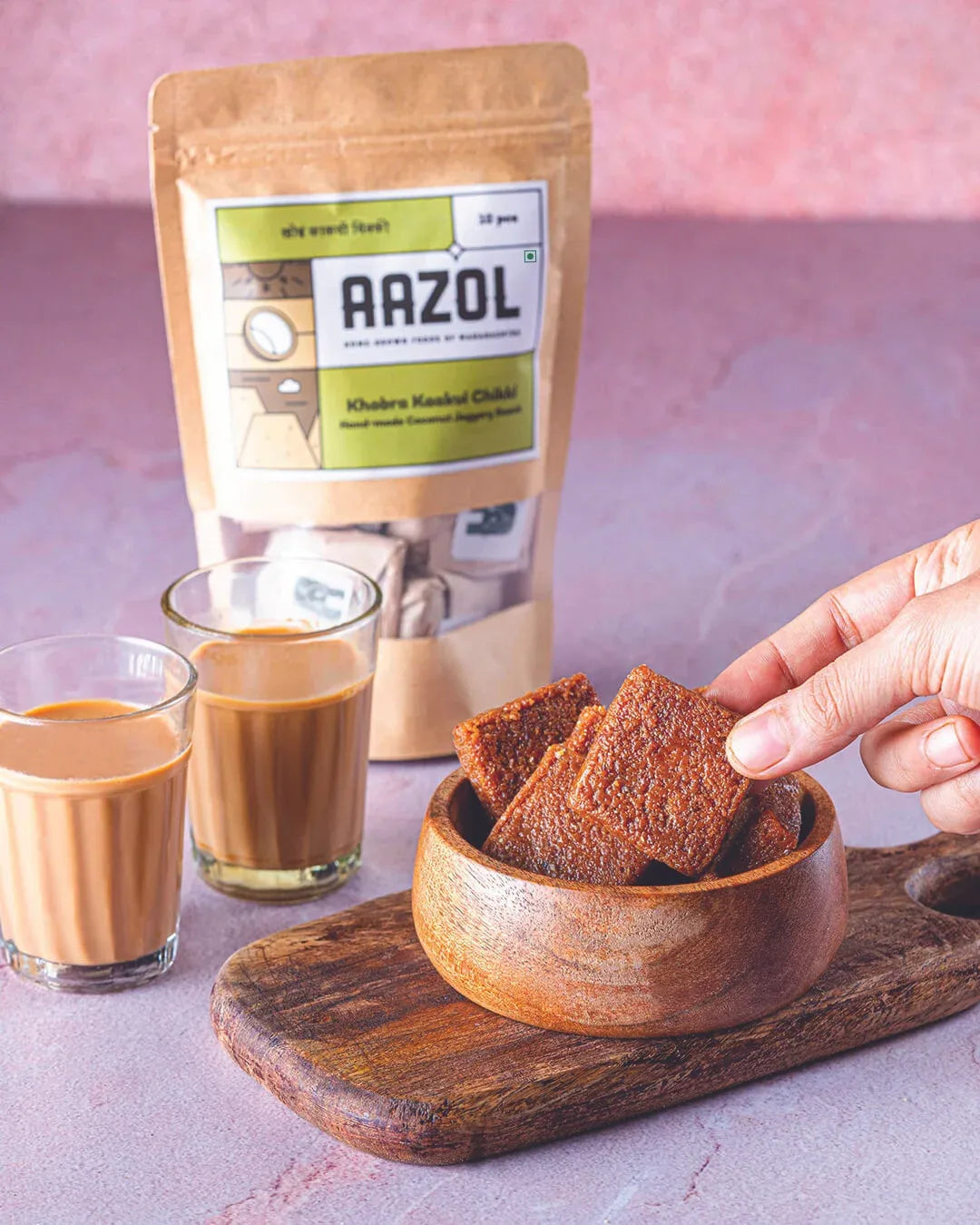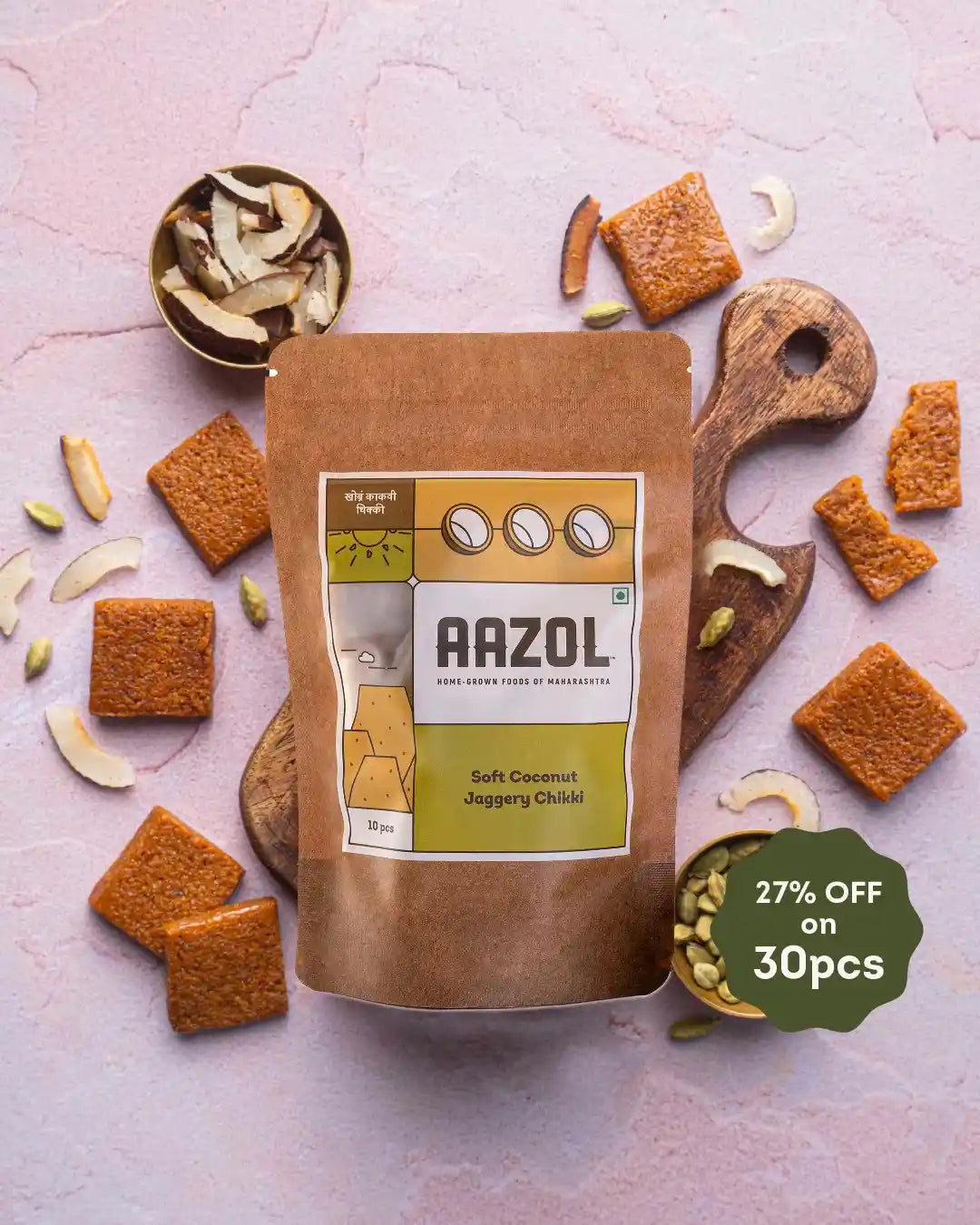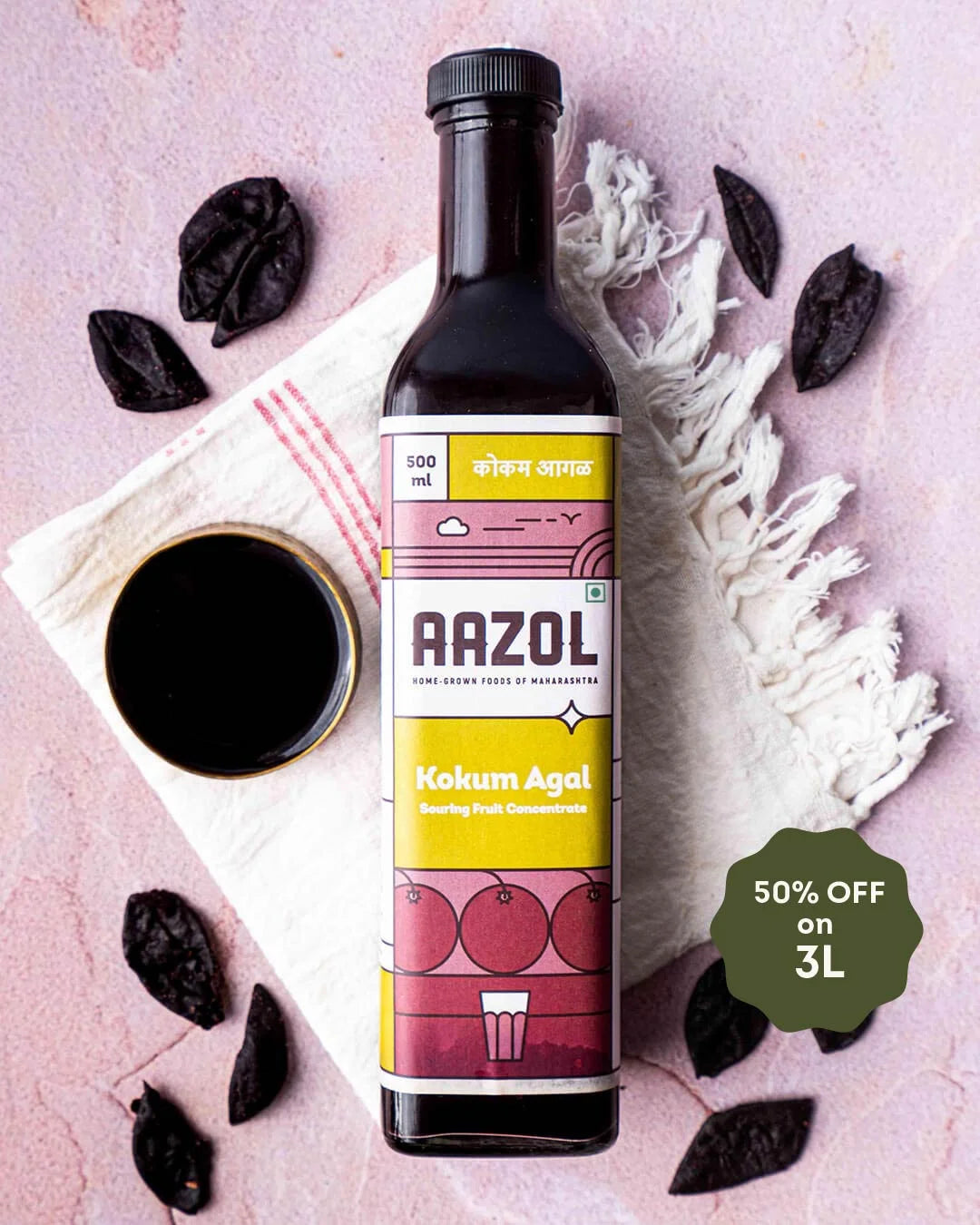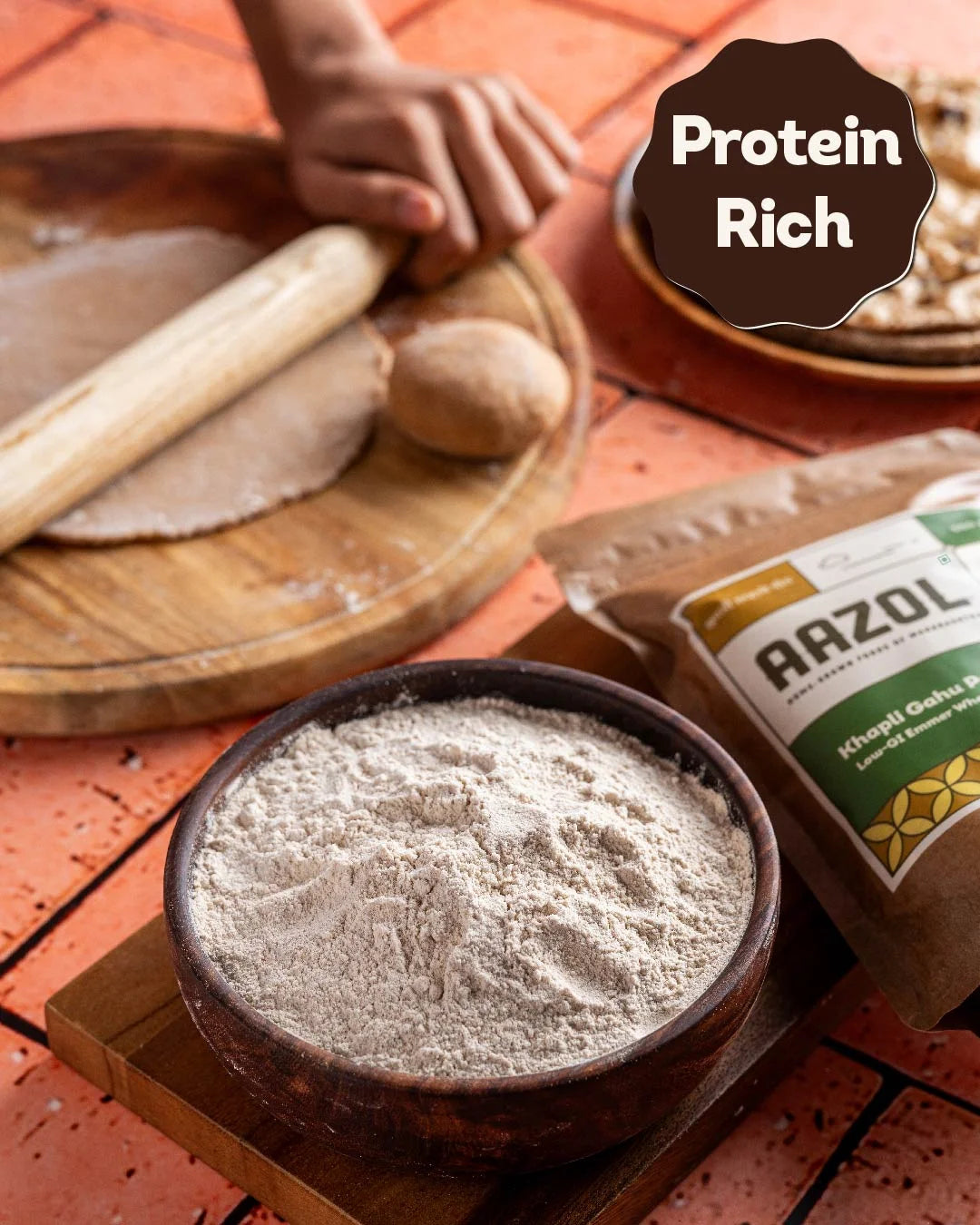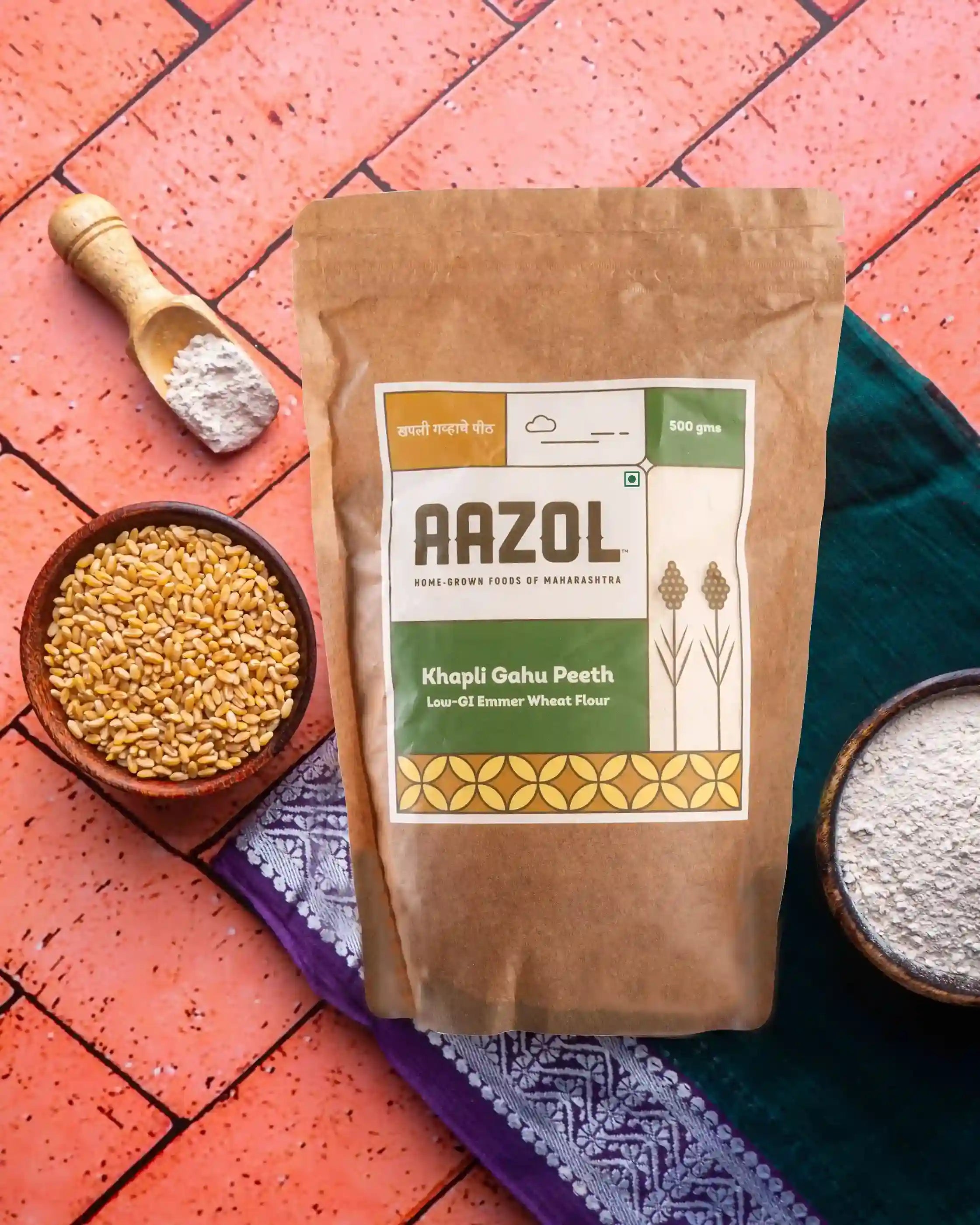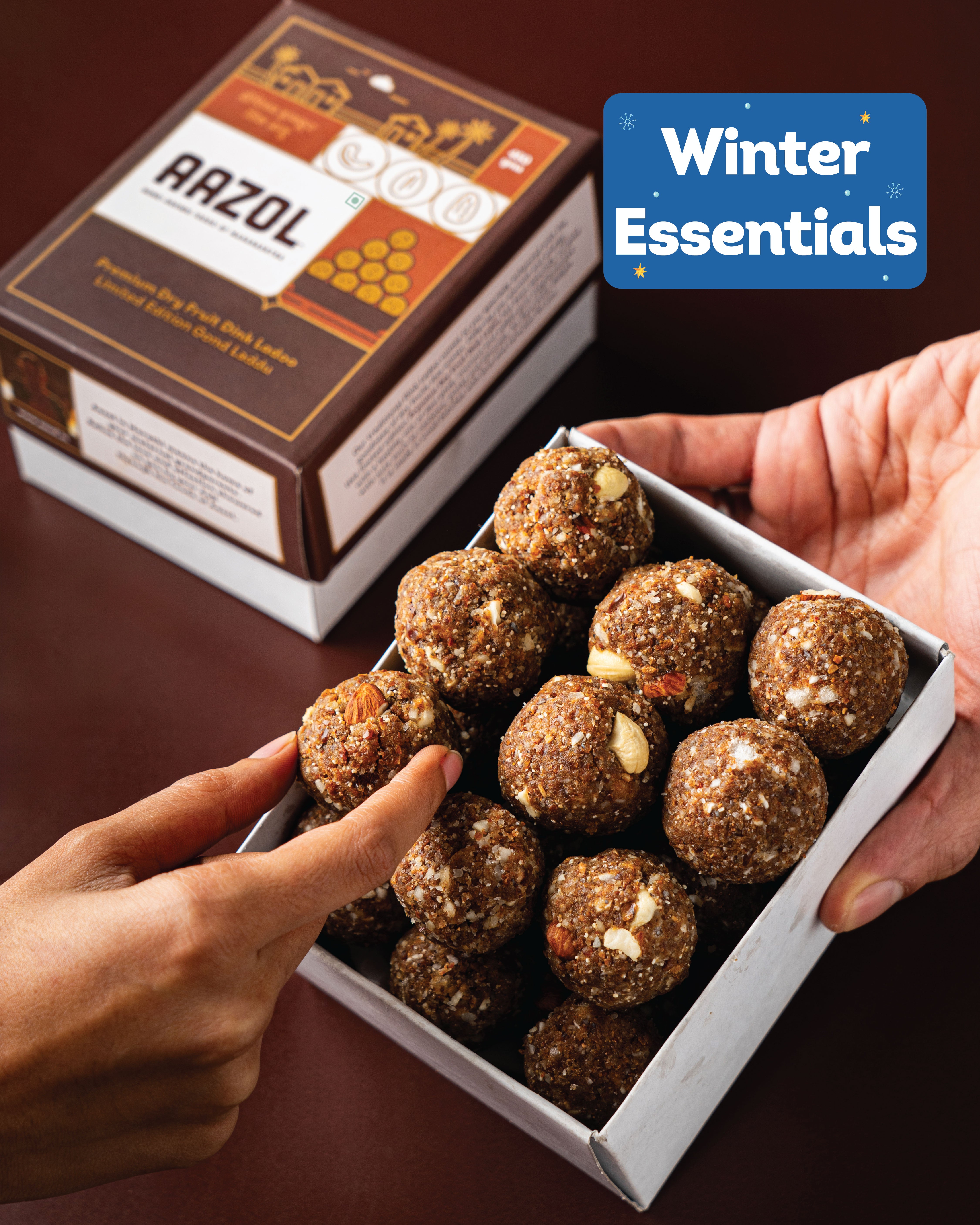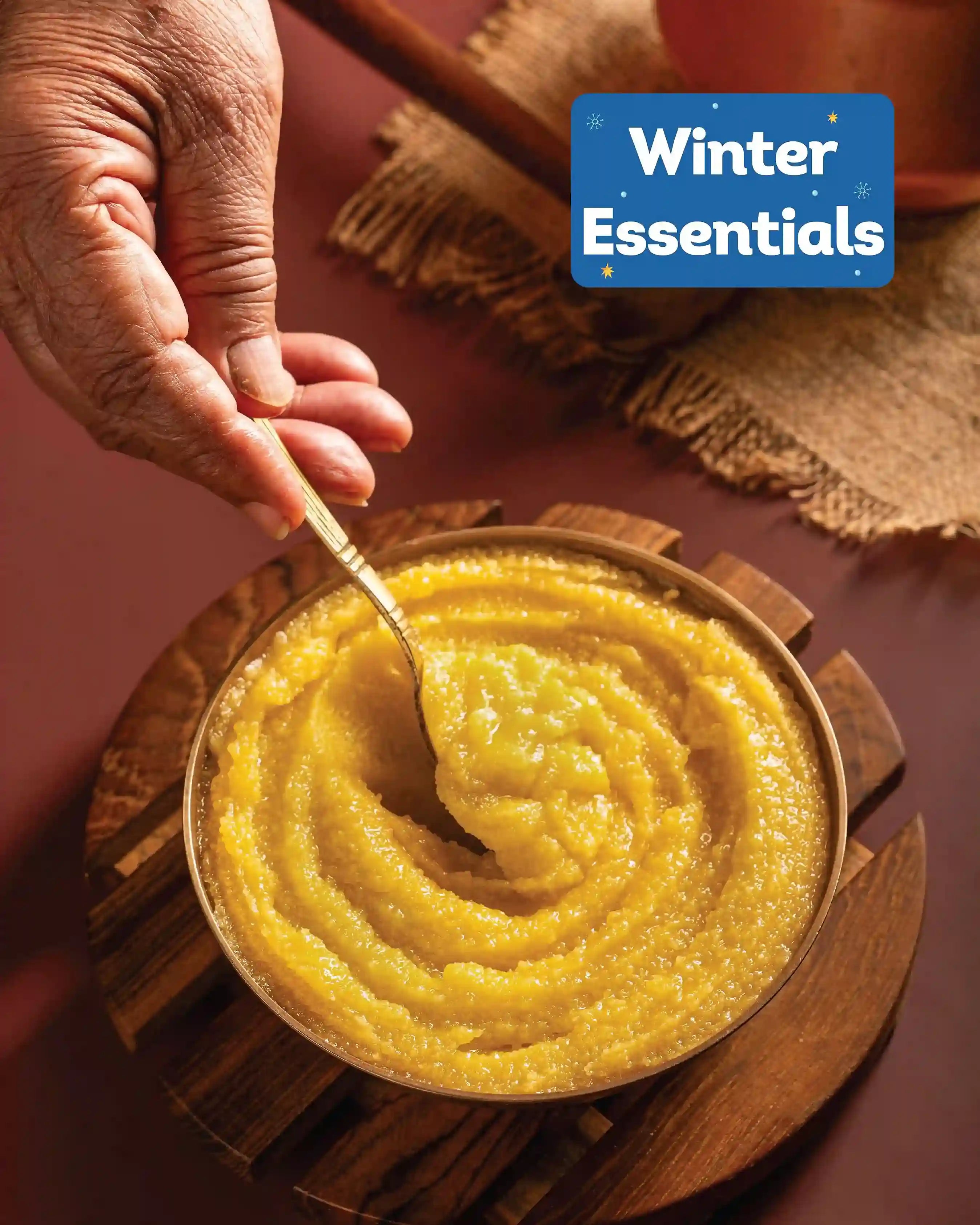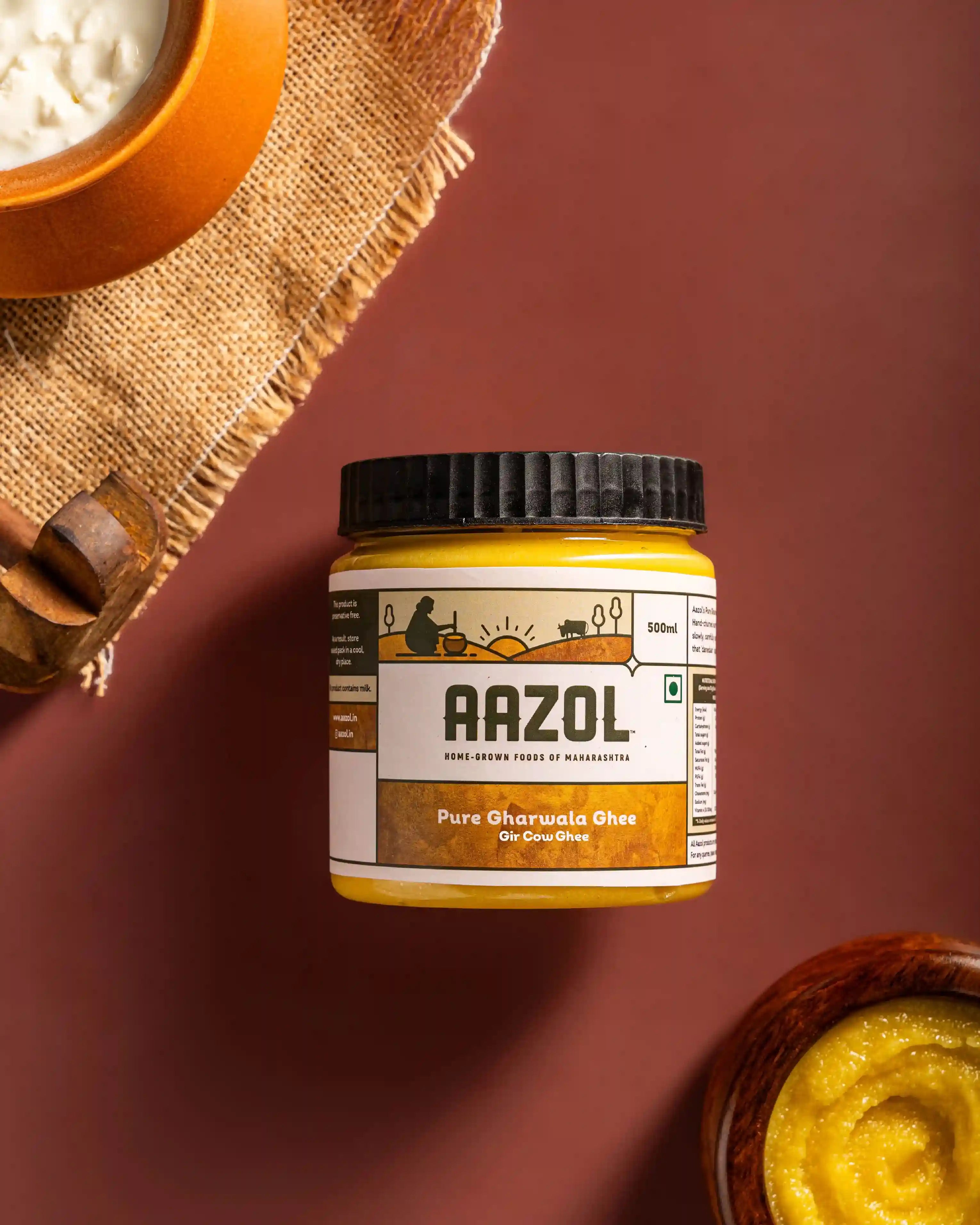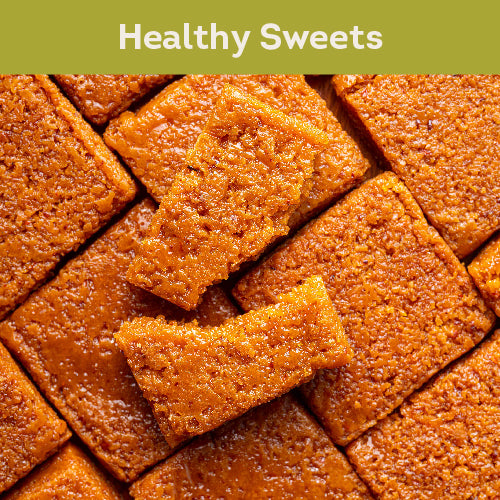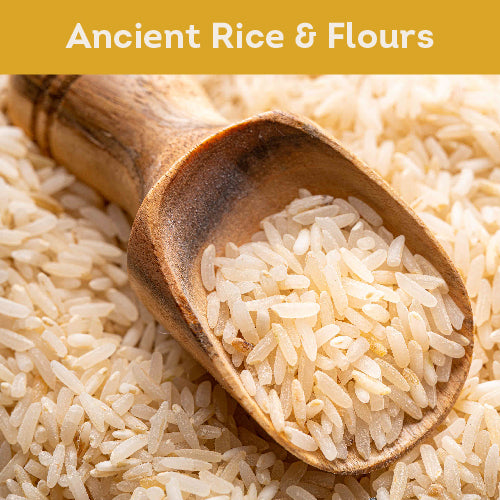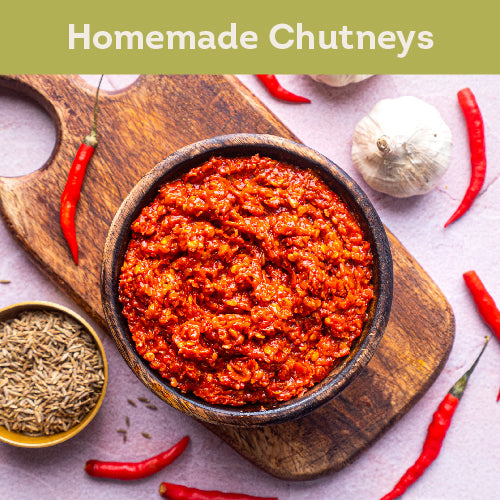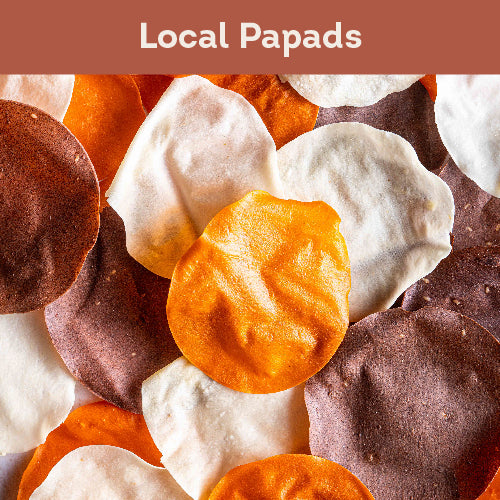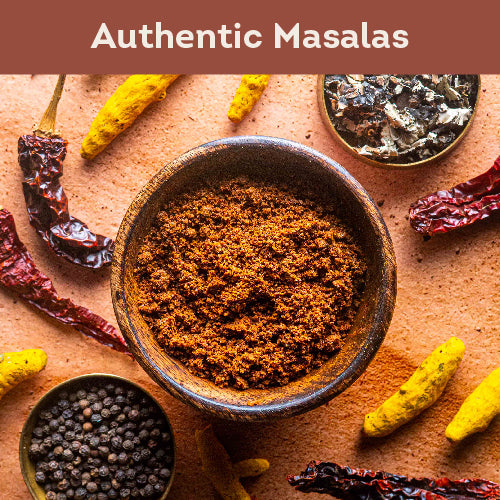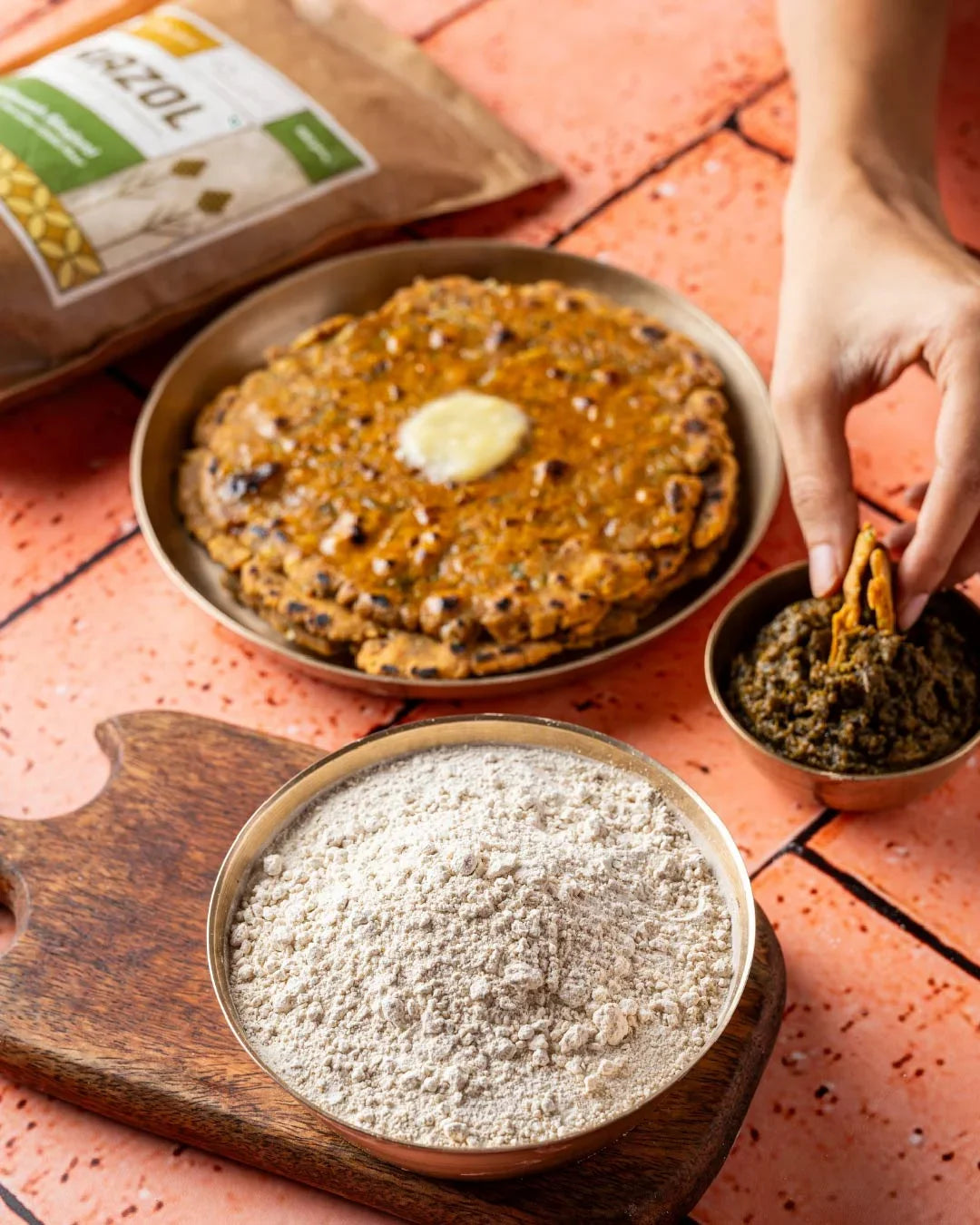
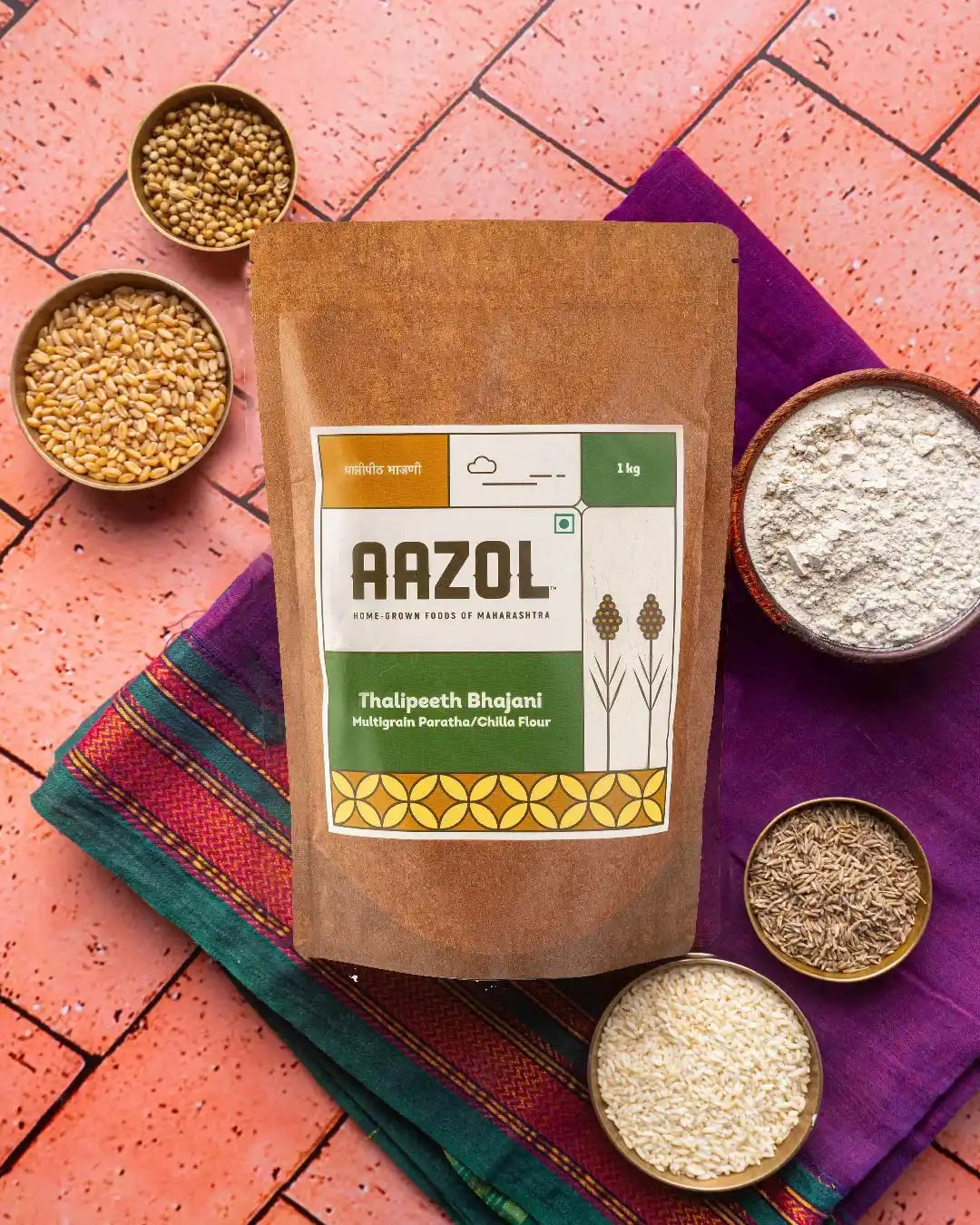
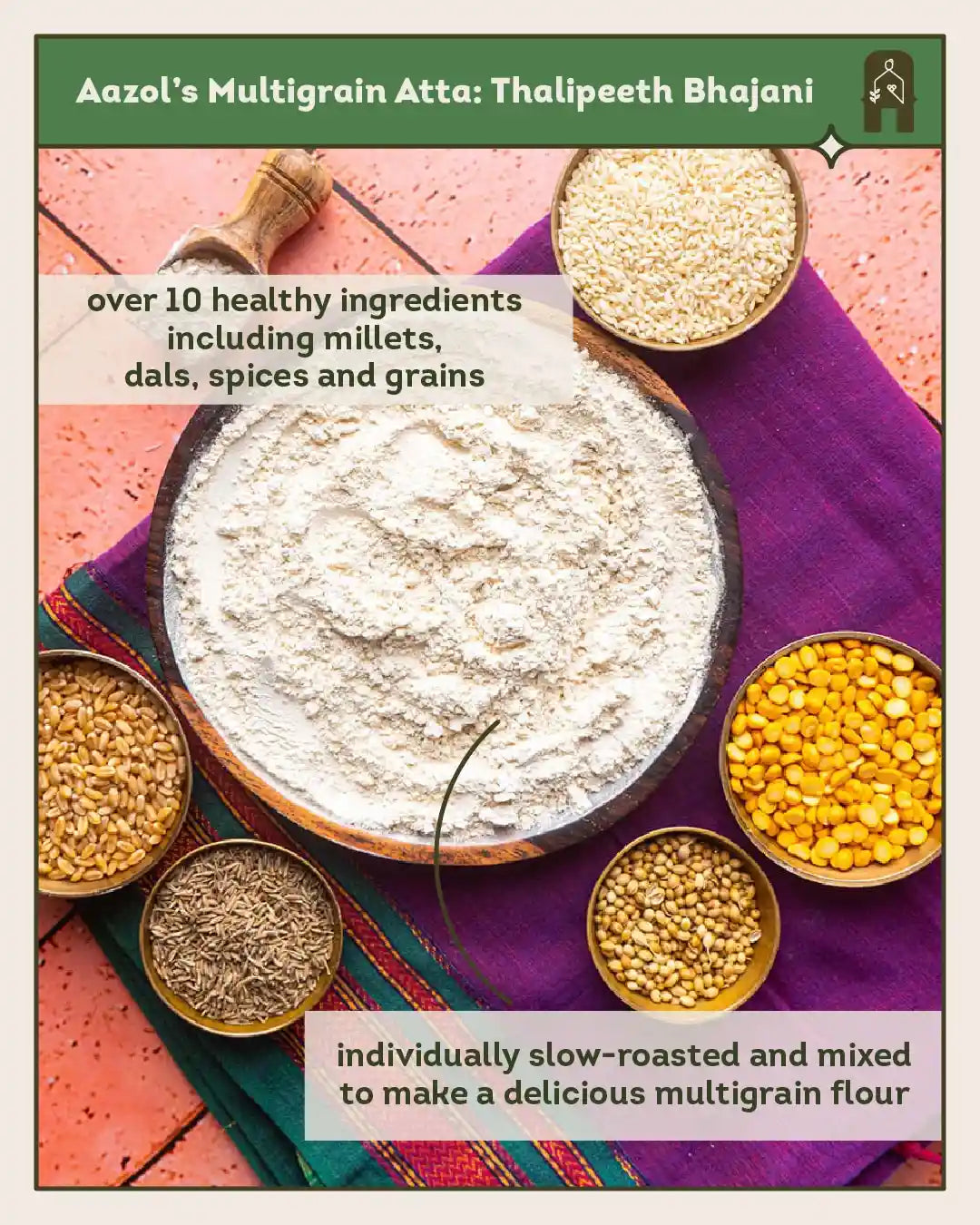
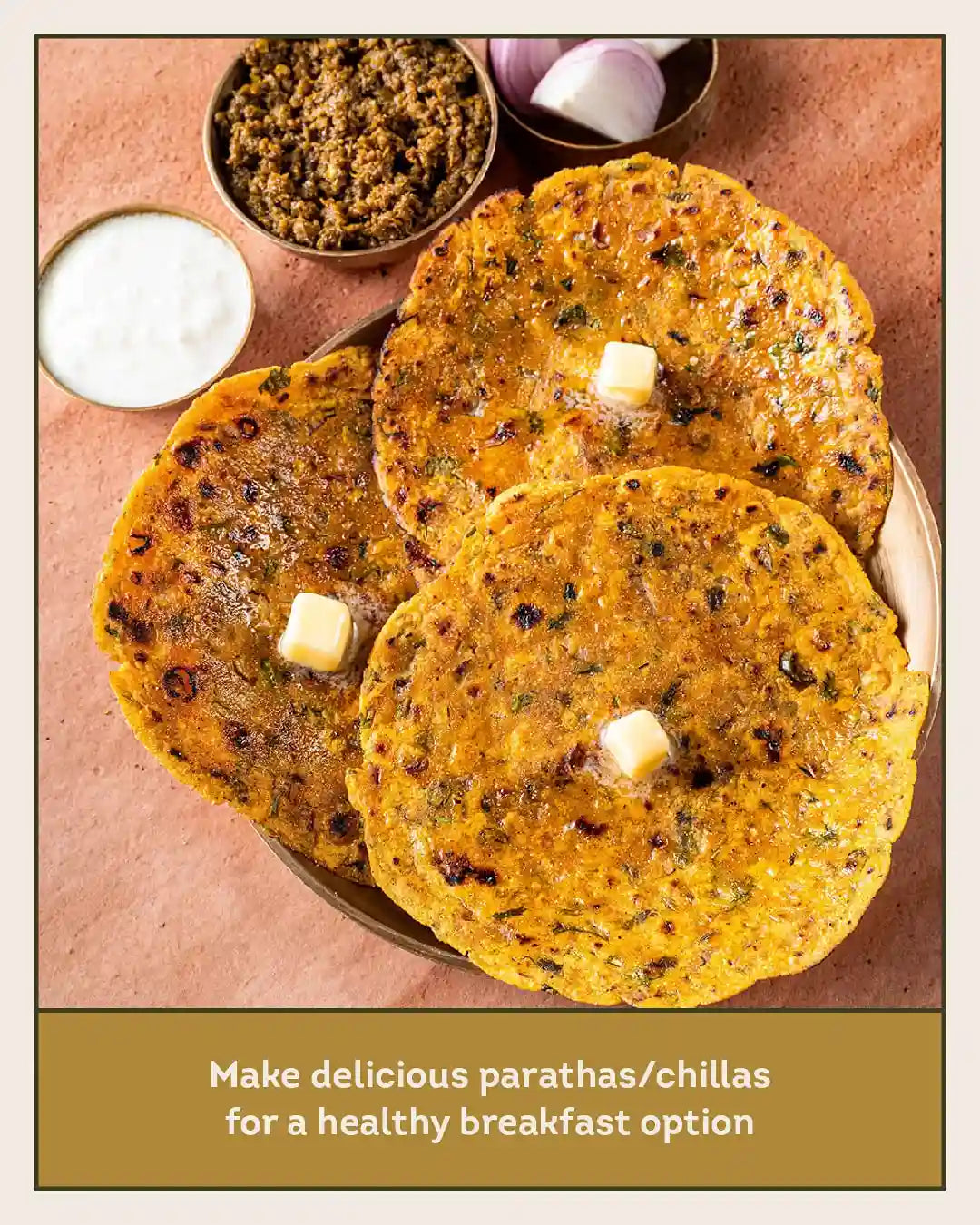




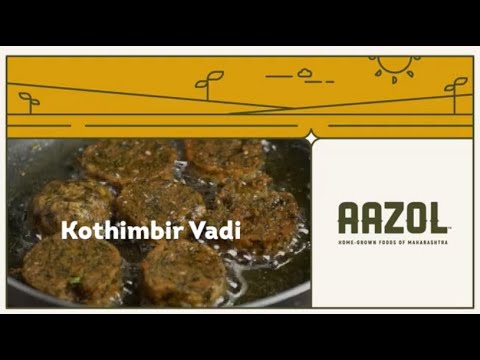
Multigrain Atta: Thalipeeth Bhajani (500g/1kg)
MRP is inclusive of all taxes.
Use codes AAZOL25 and AAZOL100
Free Shipping above INR 1,499
For orders INR 800 - 1,999
(Fees - INR 149)

Description
Aazol's Thalipeeth Bhajani is a slow-roasted multigrain atta. A nutritious combination of wheat, rice, millets, dals and spices, this mix grain atta makes wholesome and delicious parathas/chillas. Simply add chopped onion, coriander and spice tempering and wow your friends and family.
Provenance
One of Maharashtra’s most loved breakfast and evening Maharashtrian snacks, the Thalipeeth recipe is different in every home. Some families add grated veggies or greens of choice. What’s common is the bhajani or mixed grain flour. A good bhajani stands out by roasting the grains to the right temperature. The same mix can also make Kothimbir Vadi (besan and coriander cakes) and Alu Vadi (rolled gram flour-lined colacassia leaves).
About The Seller
Calling Suvarna Sandip Warde a one-woman-army is by no means a stretch. Along with her family, she relocated to the quaint village of Revaj from Mumbai in 1998. The village didn’t have many commercial establishments and residents had to rely on Alibag for the most basic of requirements. Against the advice of everyone, she started selling chapati and bhaaji and within one year grew it into a business of selling spice mixes. Today, the dynamic entrepreneur runs Kasthuri, an all-women-staffed restaurant and SHG in Alibag and dabbles in a variety of activities, from vegetable farming to experimenting with all-natural products. Suvarna has a limitless vision to grow and see others around her grow; a big part of her day is spent motivating the all-women workforce to upskill. Her attention to detail comes in handy when preparing her slow-roasted and meticulously ground flours. In her 15 years of work, she has striven to build a sense of community in the truest sense with the result that her employees are well taken care of, including getting their salaries paid in full throughout the lockdown.
Shipping & Delivery
- Free shipping for orders above INR 499. For orders under or equal to INR 499, there is a shipping charge of INR 100.
- COD available on orders between INR 499 and INR 1,999. COD charge of INR 99 shall apply.
- Same-day dispatch for pre-paid orders placed before 2 PM.
- The delivery time is 2 to 7 business days from date of order.
- For detailed shipping policy, please visit here.
Other Information
MRP : ₹ 770
Country of Origin: India
Source, packed & marketed by: AAZOL VENTURES (MUMBAI) PRIVATE LIMITED, 402, Sun Rise Building, Pali Naka, Dr. Ambedkar Road, Bandra(West), Mumbai Suburban, Maharashtra, 400050, Phone: +91-7400470490, E-Mail: askaaji@aazol.in
Customer Care: AAZOL VENTURES (MUMBAI) PRIVATE LIMITED, 402, Sun Rise Building, Pali Naka, Dr. Ambedkar Road, Bandra(West), Mumbai Suburban, Maharashtra, 400050, Phone: +91-7400470490, E-Mail: askaaji@aazol.in
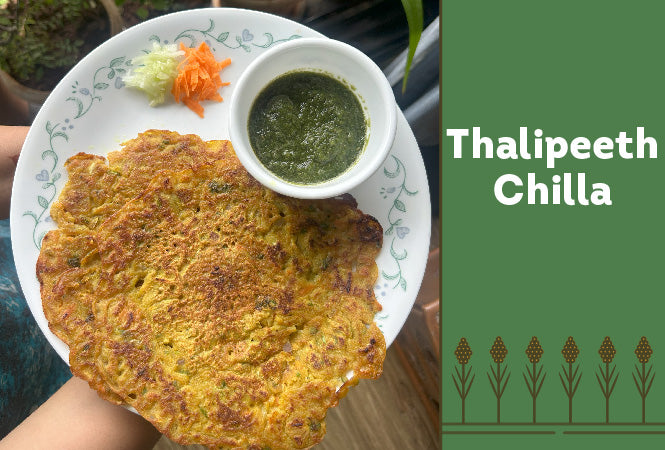
Vegetable Chilla using Aazol’s Multigrain Atta: Thalipeeth Bhajani
A wholesome and traditional Maharashtrian dish, Thalipeeth is a savoury pancake loaded with nutrition and flavour. Made using Aazol’s Multigrain Atta: Thalipeeth Bhajani, this recipe is perfect for breakfast or as a light meal.
Ingredients:
- Aazol’s Multigrain Atta: Thalipeeth Bhajani
- 1 medium-sized onion, finely chopped
- 1 small carrot, grated
- 1 small cucumber, grated
- 1 green chilli, finely chopped
- Fresh coriander, finely chopped
- 1/2 teaspoon red chilli powder
- 1/4 teaspoon turmeric powder (haldi)
- Salt to taste
- 1 tablespoon white sesame seeds
- Water as required
Method:
1. Prepare the Mixture:
- In a large mixing bowl, combine Aazol’s Multigrain Atta: Thalipeeth Bhajani, onions, grated carrot, cucumber, green chilli and coriander.
- Add red chilli powder, turmeric powder, salt, and sesame seeds.
2. Mix the Dough:
- Mix the dry ingredients well. Gradually add water to form a thick, sticky batter.
3. Cook the Thalipeeth:
- Heat a non-stick pan or tawa over medium heat. Grease lightly with oil.
- Take a small portion of the batter and spread it onto the pan to form a thick, round pancake.
- Cook on one side until golden brown. Flip carefully and cook the other side until crisp
4. Serve Hot:
- Serve the Thalipeeth hot with a dollop of curd, pickle, or Aazol’s Chutneys for a complete meal.
Tips:
- Customise Veggies: Add grated beetroot, spinach or bottle gourd for variation.
- Uniform Cooking:
Make small holes in the centre of the Thalipeeth while cooking to ensure even roasting.- Serving Suggestion:
Pair it with Aazol’s Gharwala Ghee for an authentic taste.
Enjoy the earthy flavours and goodness of Aazol’s Multigrain Atta:Thalipeeth Bhajani in every bite of this delicious and nutritious Thalipeeth!
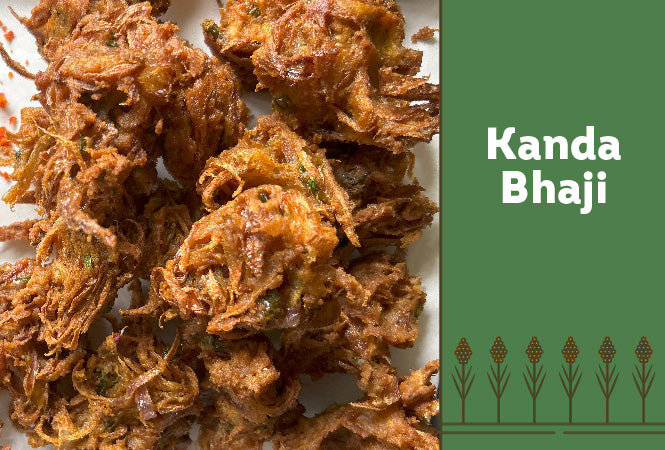
Kanda Bhaji using Aazol’s Multigrain Atta: Thalipeeth Bhajani
Give your favourite Kanda Bhaji a wholesome upgrade with Aazol’s Multigrain Atta : Thalipeeth Bhajani Crispy on the outside, soft on the inside, these bhajis are a perfect balance of indulgence and nutrition.
Ingredients:
- Onions (thinly sliced)
- 1 tsp Red Chilli Powder
- 1/2 tsp Garam Masala Powder
- 1/4 tsp Haldi ( Turmeric powder )
- Salt to taste
- 1-2 Green Chillies (finely chopped)
- 1/4 tsp Ajwain (carom seeds)
- 1/2 tsp Jeera (cumin seeds)
- Fresh Coriander (chopped)
- Aazol’s Multigrain Atta
- Water as required
- 1/4 tsp Baking Soda
Method:
1. Prepare the Bhaji Batter:
- In a large mixing bowl, add thinly sliced onions and sprinkle a pinch of salt.
- Let them sit for a few minutes to release moisture.
Add red chilli powder, garam masala, haldi, green chillies, ajwain, jeera, and fresh coriander to the onions. Mix well.
- Aazol’s Multigrain Atta to the bowl and combine thoroughly with the onion mixture.
2. Add Water and Baking Soda:
- Gradually add water to the mixture to form a thick, sticky batter. Ensure the batter coats the onions well.
- Just before frying, mix in the baking soda to make the bhaji light and fluffy.
3. Fry the Bhaji:
- Heat oil in a deep pan or kadhai over medium heat.
- Drop spoonfuls of the batter into the hot oil and fry until golden brown, turning occasionally for even cooking.
- Remove the bhaji onto a plate lined with kitchen paper to drain excess oil.
4. Serve Hot:
- Enjoy the crispy Kanda Bhaji with green chutney, tamarind chutney, or a steaming cup of chai.
Tips:
- Crispier Bhaji: Use cold water for the batter to get extra crispy bhaji.
- Enhance Flavour:
Add a pinch of Aazol’s Ghati Masala for an extra flavour kick.- Serving Suggestion: Pair with a sprinkle of Aazol’s Solapuri Peanut Chutney for a unique twist.
Relish the goodness of multigrain in this traditional snack with Aazol’s Multigrain Atta.


